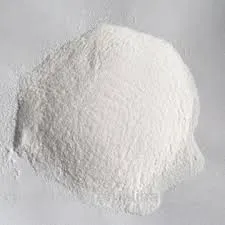
Nov . 06, 2024 14:51 Back to list
Exploring the Benefits of Redispersible Polymer Powders in Construction Applications
Understanding Redispersible Polymers Composition, Applications, and Benefits
Redispersible polymers are a fascinating topic within the field of materials science, particularly known for their versatility in construction and related industries. These polymers, typically in powder form, become dispersible in water when mixed, making them an essential component of various applications, particularly in dry-mix mortars. This article aims to delve into the composition, applications, and numerous benefits of redispersible polymers.
Composition of Redispersible Polymers
Redispersible polymers are derived from latex and comprise various synthetic resins. Commonly, they are produced through a process known as spray drying, where the liquid polymer is turned into fine powder by evaporating the water content. The most frequently used types of redispersible polymers include ethylene-vinyl acetate (EVA), styrene-butadiene (SB), and vinyl acetate-ethylene (VAE) copolymers. These polymers are selected based on their specific mechanical properties and compatibility with other components in the mixture.
One of the key features of redispersible polymer powders is their ability to form a film upon resuspension in water. This property is crucial because it allows the powder to interact with other materials such as cement or lime, providing enhanced performance characteristics, such as improved adhesion and flexibility.
Applications of Redispersible Polymers
Redispersible polymers find extensive use in the construction industry, primarily in dry-mix applications. These polymers are often incorporated into products like tile adhesives, plaster, and joint compounds. Their ability to improve adhesion is particularly valuable in applications where a strong bond is critical.
1. Tile Adhesives The incorporation of redispersible polymers enhances the performance of tile adhesives, improving the bond strength and flexibility. This is particularly beneficial for installations in areas prone to movement or thermal expansion.
2. Dry Mortars In dry-mix mortars, redispersible polymers contribute to better workability and extend open time. This means that workers have more time to adjust tiles or other materials before the adhesive sets, improving overall efficiency.
3. Rendering and Plastering These polymers help provide a smooth finish and enhanced resistance to cracking in renderings and plasters. They also improve the weather resistance of exterior applications.
redispersible polymer

Benefits of Using Redispersible Polymers
The adoption of redispersible polymers in construction-related formulations offers numerous advantages
- Enhanced Adhesion One of the most significant benefits is improved adhesion to various substrates, including concrete, brick, and drywall. This leads to higher durability and longevity of construction materials.
- Flexibility and Crack Resistance Redispersible polymers impart flexibility to rigid materials, which helps prevent cracking due to thermal expansion or substrate movement.
- Water Resistance The polymers contribute to water resistance, making the finished product suitable for both interior and exterior applications.
- Improved Workability By enhancing the workability of mixtures, these polymers allow for easier application and adjustments during construction.
- Reduced Dust Emissions In dry-mix applications, the use of redispersible polymer powders can help reduce dust emissions, contributing to a safer work environment.
Conclusion
In summary, redispersible polymers are an invaluable component in modern construction materials, significantly enhancing the performance of various applications. Their unique composition allows for improved adhesion, flexibility, and workability, meeting the demands of contemporary building practices. As technology advances, the development of new formulations will continue to expand the applications and benefits of these versatile materials, making them a vital area of focus for engineers, architects, and builders alike. As we move toward more sustainable construction practices, the role of redispersible polymers will undoubtedly become more prominent in delivering innovative, high-performance solutions.
-
Versatile Hpmc Uses in Different Industries
NewsJun.19,2025
-
Redispersible Powder's Role in Enhancing Durability of Construction Products
NewsJun.19,2025
-
Hydroxyethyl Cellulose Applications Driving Green Industrial Processes
NewsJun.19,2025
-
Exploring Different Redispersible Polymer Powder
NewsJun.19,2025
-
Choosing the Right Mortar Bonding Agent
NewsJun.19,2025
-
Applications and Significance of China Hpmc in Modern Industries
NewsJun.19,2025







